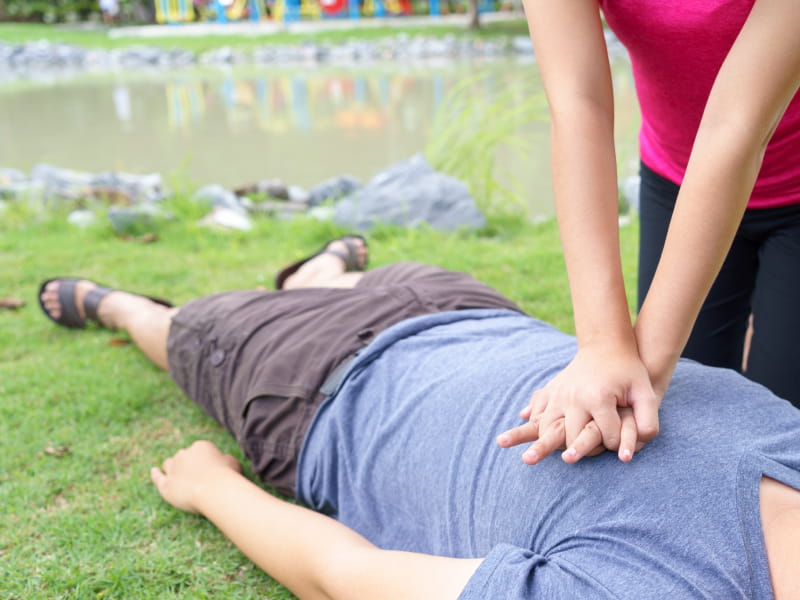What to know about bystander CPR and coronavirus risk
By American Heart Association News

The COVID-19 pandemic hasn't changed the fact that bystanders play a crucial role in improving survival rates for cardiac arrest. But providing potentially lifesaving CPR requires extra considerations amid the coronavirus crisis, according to temporary guidance from the American Heart Association.
"Historically, we haven't seen a significant risk to rescuers providing Hands-Only CPR, but in COVID-19 patients, performing chest compressions has the potential to spread the virus," said Dr. Dana Edelson, executive medical director for rescue care at the University of Chicago School of Medicine.
For cardiac arrests at home, another household member may be the lowest-risk provider of CPR, because they have likely already been exposed if the patient has COVID-19, said Edelson, lead author of the guidance published in April in the AHA's journal Circulation.
"There's likely little downside to starting CPR and a lot of upside in terms of survivability for the patient," she said.
About 70% of cardiac arrests that occur outside a hospital happen in a home or residential setting, and with stay-at-home orders in effect for most of the country, "it's hard to imagine that percentage not increasing," Edelson said. "The most likely people to be rescuers are other household members."
Initiating CPR right away rather than waiting for medical personnel to arrive makes a big difference. CPR initiated by a bystander can nearly double the chance of survival from cardiac arrest, from about 7% to 14%.
Strains on emergency response systems in some areas could result in delays before medical personnel arrive, underscoring the need for bystanders to be ready to act, Edelson said.
"Every minute of delay correlates with a lower likelihood of survival," she said.
"Use your shelter-in-place time to do a quick online refresher for Hands-Only CPR. The life you save is most likely to be someone you love."
For cardiac arrests in public places, such as a grocery store, pharmacy or other workplace for essential workers, the current guidance says bystanders should at least perform Hands-Only CPR. There is the option to use a face mask or cloth to cover the mouth and nose of the rescuer and/or the victim to reduce the risk of virus transmission, although no data is available to support such a practice.
"The COVID-19 era introduces risk to rescuers that weren't there before, and that risk goes up if you are older or have underlying medical conditions, such as heart disease, lung disease and diabetes," Edelson said. "Our guidelines remain unchanged in that if you are willing and able to do CPR, you should do CPR."
Bystanders in public places must balance their own risk factors for complications if they get COVID-19 against the knowledge that survival rates without CPR are dismal, Edelson said. But calling 911 is key, as is deciding quickly about whether to perform CPR.
With portable automated external defibrillators (PDF), or AEDs, use of an electric charge to shock the heart back into a normal rhythm does not appear to carry an increased risk of dispersing the coronavirus into the air, Edelson said.
"If there's an AED nearby, use it," she said.
Traditional CPR, which incorporates rescue breaths in addition to chest compressions, is still recommended for children because they more often experience cardiac arrest as a result of a respiratory event rather than a cardiac event, Edelson said.
The guidance was developed in collaboration with the American Academy of Pediatrics, American College of Emergency Physicians, American Association for Respiratory Care, Society of Critical Care Anesthesiologists and American Society of Anesthesiologists.
Editor's note: Because of the rapidly evolving events surrounding the coronavirus, the facts and advice presented in this story may have changed since publication. Visit Heart.org for the latest coverage, and check with the Centers for Disease Control and Prevention and local health officials for the most recent guidance.
If you have questions or comments about this story, please email [email protected].





